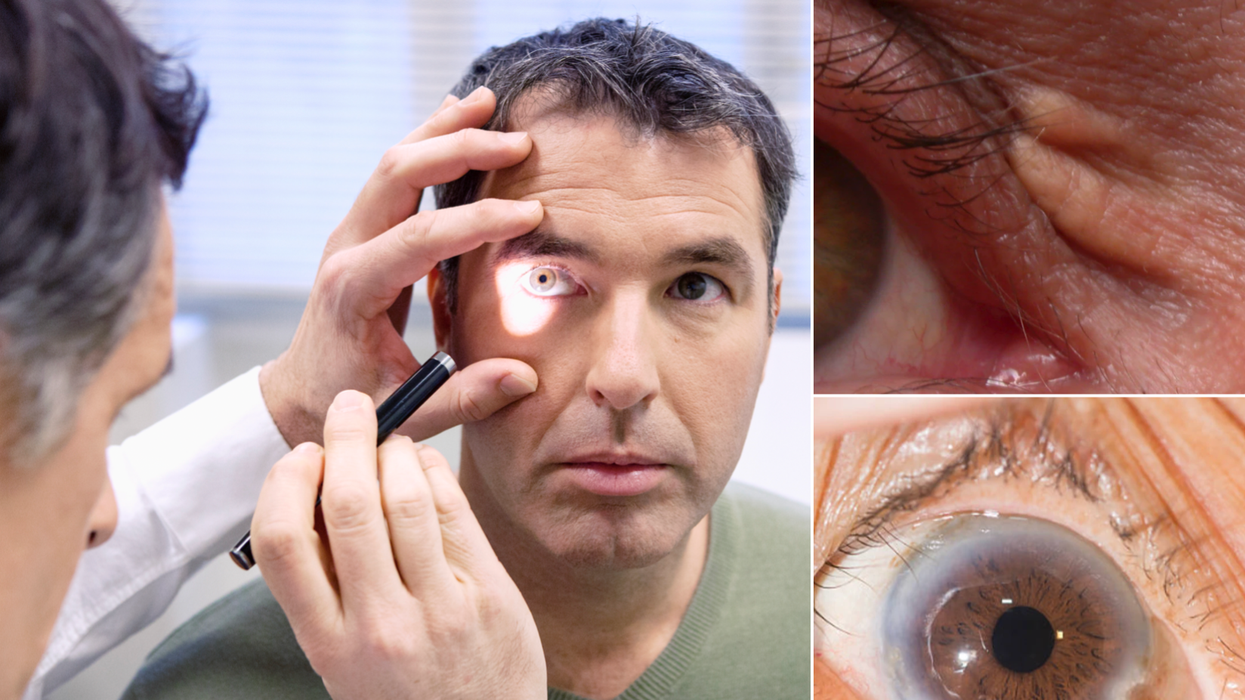'I am a doctor and I can tell a patient has high cholesterol simply by looking at their face'

Cholesterol deposits can form in the eye, according to one doctor
|Getty Images

All products and promotions are independently selected by our experts. To help us provide free impartial advice, we will earn an affiliate commission if you buy something. Click here to learn more
It’s not an indication that you "absolutely" have elevated cholesterol but it's worth getting checked out, Doctor Blair Lonsberry says
Don't Miss
Most Read
Latest
High cholesterol is pernicious because it raises your risk of heart disease without throwing up warning signs.
Occasionally, however, waxy deposits can bubble up to the surface. Doctor Blair Lonsberry, Clinic Director of Pacific University’s Vision Clinic in Portland, Oregon, has recognised this phenomenon in his "younger" patients.
- View Deal | Subscription boxes from MyVitamins have all key nutrients
- View Deal | Buy 120x Plant Sterols tablets for cholesterol at Amazon
It's necessarily a cause for concern but it's worth getting checked out, he says.
He told the Review of Optometry: “There’s a deposit on the front part of your eye that is an indication of cholesterol. I would expect this in a patient over the age of 60, but because you’re younger than that, I would recommend that you have your cholesterol levels checked."

Corneal arcus can indicate elevated levels of cholesterol
|Howell Findley, O.D
According to the doc, it’s not an indication that you "absolutely" have elevated cholesterol, adding: "Even if you do have elevated cholesterol, the deposit in your eye doesn’t indicate if you have the good cholesterol or the bad cholesterol—it’s just an indication of a cholesterol deposit. So my recommendation is that you at least have your cholesterol levels evaluated.”
This deposit in the eye presents as grayish-white ring around the cornea of the eye. It's formally known as corneal arcus. The cornea is the transparent section that covers the iris and the pupil.
According to Doctor Matthew Bovenzi, Chief of Advanced Care of the University Eye Center (UEC), small, soft, yellowish elevations of skin above the eyes and near the nose can also indicate high cholesterol. This is called xanthelasma.
These tend to be "benign" - though they can indicate high cholesterol, the doc says.
Research suggests approximately half of individuals with xanthelasma exhibit abnormal cholesterol levels.
It's important to note that the only way to know for sure that you have high cholesterol is to have a blood test.
LATEST DEVELOPMENTS
 Xanthelasmata is a fatty deposit of cholesterol around her eyes | Getty Images
Xanthelasmata is a fatty deposit of cholesterol around her eyes | Getty ImagesAn Australian researcher says we should consider testing for cholesterol earlier in life, with his team's recent research showing that interventions to prevent and reduce "bad" cholesterol in childhood and young adulthood may help prevent premature heart disease later in life.
Publishing in JAMA, researchers from the Baker Heart and Diabetes Institute show that individuals who resolve high levels of all forms of bad cholesterol (known as non-HDL-cholesterol) by adulthood have a similar risk of cardiovascular disease to those who never had high levels.
Senior author, Associate Professor Costan Magnussen says dyslipidemia—a lipid metabolism disorder, resulting in abnormal levels of cholesterol or fats in the blood—in children is silent and potentially deadly. It is characterised by high levels of bad cholesterol including LDL-cholesterol, and triglycerides and contributes to the build-up of plaque in the arteries.
Associate Professor Magnussen says there is widespread research to show that cardiovascular disease begins early in life. "We should be having conversations about screening and prevention much earlier in life rather than deferring this until mid-adulthood when the disease is often advanced and preventive measures may be less effective," he said.










